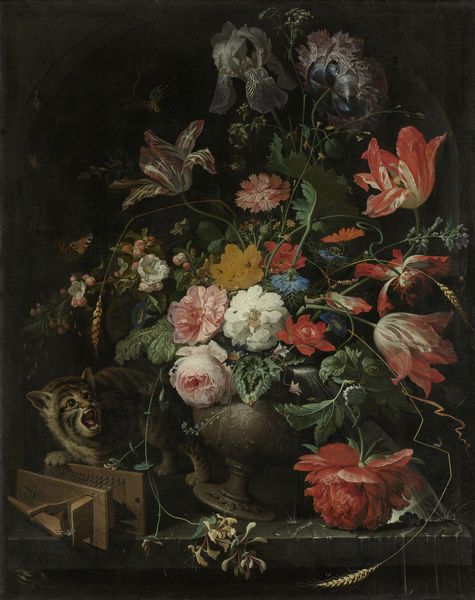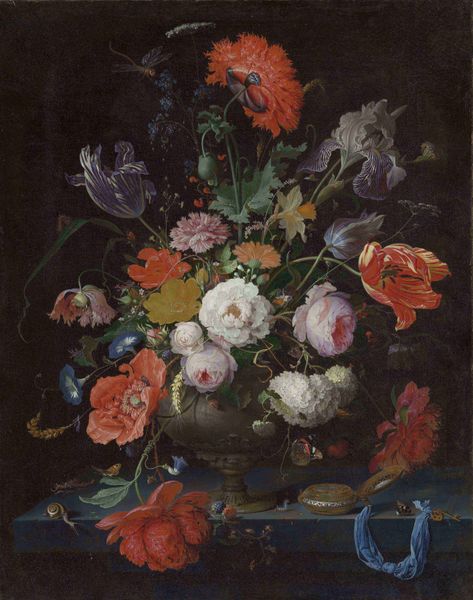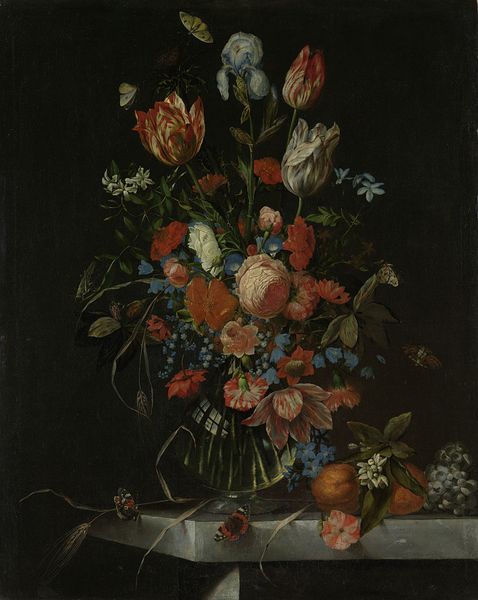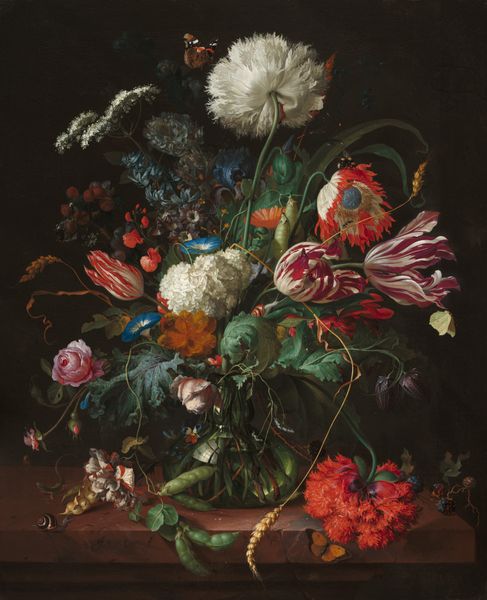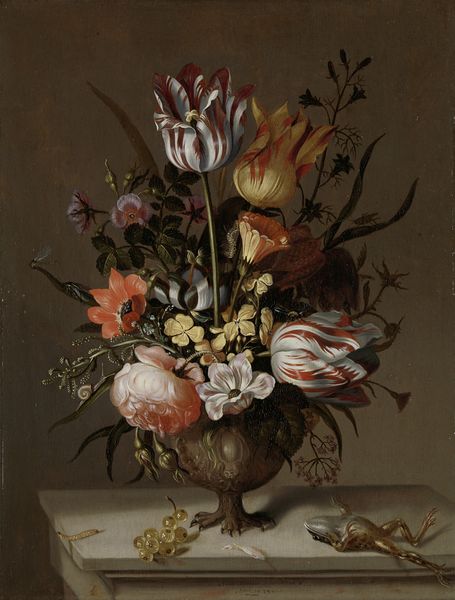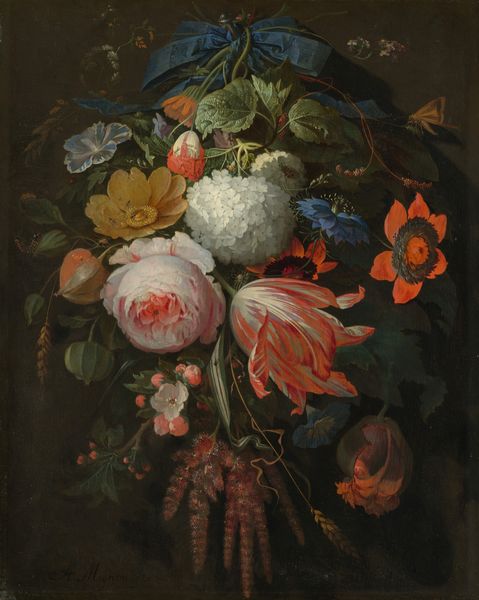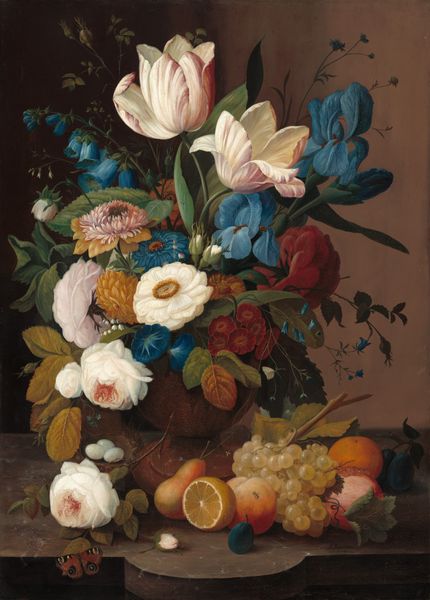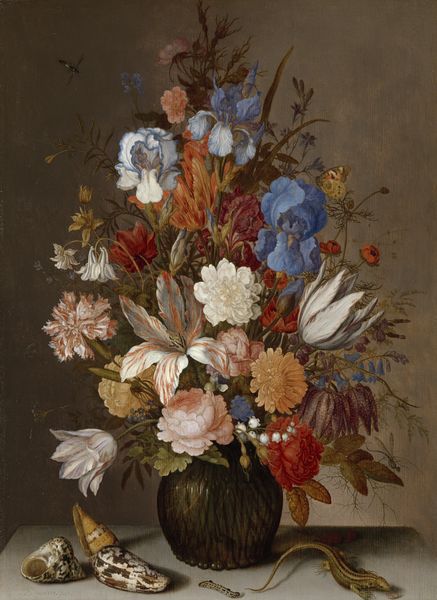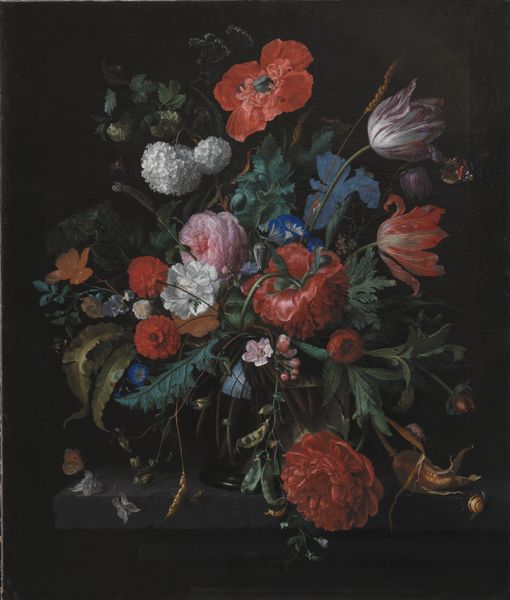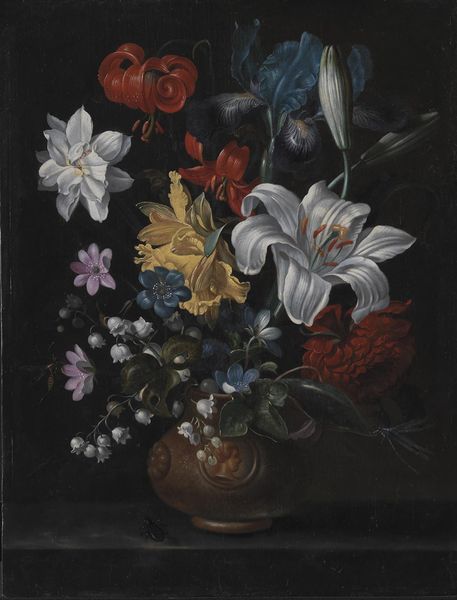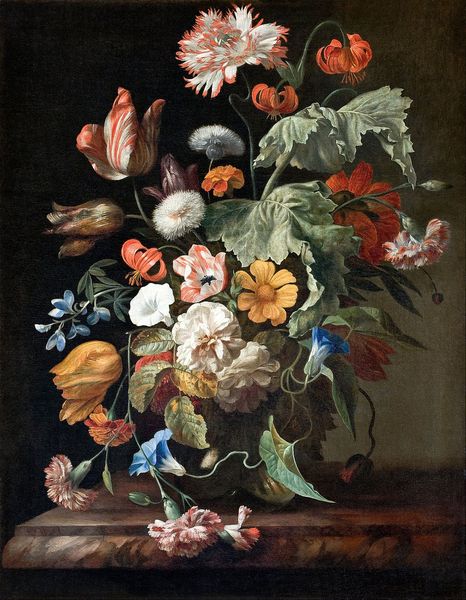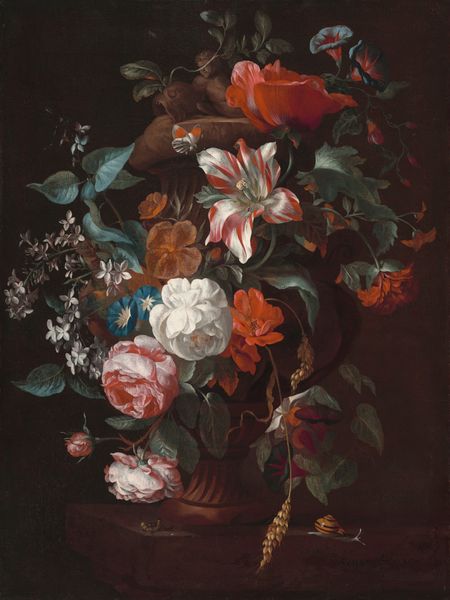
oil-paint
#
baroque
#
oil-paint
#
oil painting
#
realism
Dimensions: overall: 50.4 × 67 cm (19 13/16 × 26 3/8 in.) framed: 66.36 × 82.55 × 5.08 cm (26 1/8 × 32 1/2 × 2 in.)
Copyright: National Gallery of Art: CC0 1.0
Curator: This still life is “Still Life with Flowers, Grapes, and Small Game Birds” by Frans Snyders, created around 1615. Painted with oil paints, it epitomizes the Baroque era's flair for dramatic compositions. Editor: The contrast is stark. My initial impression is one of abundance meeting mortality. The vibrant blooms and plump grapes stand in such direct opposition to the dead birds. Curator: The composition divides the space into opposing concepts, light and dark, growth and death, visual metaphors often referred to as vanitas. Grapes as symbol of Christ's blood, while the blooms mirror earthly beauty. Birds have had multiple interpretations from souls, messengers of the gods, or even human vanity. The artist presents an interplay of ideas within the still life genre. Editor: True, vanitas themes run deep, yet the abundance feels aggressively opulent. In a time of extreme wealth inequality, a display like this becomes a pointed statement, perhaps of privilege or a commentary on it. This level of still life shows what one has access to and thus, says something about power. Curator: The artist definitely presents opposing viewpoints with this tableau. Snyders brings these concepts to the foreground through symbolism, technique, composition. It reflects on themes of time, change, decay, yet acknowledges that death allows space for rebirth in nature’s cycle. It asks you what matters. Editor: This invites us to ponder about those left out of such luxurious tableaus, and the power dynamics at play in both Snyder’s era, and our own consumption-driven world. Even beauty contains a shadow. Curator: So even though these still lifes continue the practice of representing objects, by taking them out of a historical and psychological framework, we take back the ownership of the representation, of what these object still evoke. Editor: I see it, understanding what it has to say to modern sensibilities that appreciate beauty but want that acknowledgement of complexity and power, which in turn provides meaning.
Comments
No comments
Be the first to comment and join the conversation on the ultimate creative platform.
